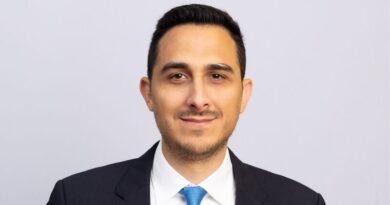Interview: Henrik Andersson, CIO, Apollo Capital
Yesterday, Australia-based crypto fund manager Henrik Andersson, Chief Investment Officer of Apollo Capital, participated in the joint Hedge Funds Club and OSL webinar on digital assets. Today, HFC boss Stefan Nilsson decided to have a chat with Henrik about who he is, how he ended up managing a crypto strategy and what some of the obstacles and opportunities are.
Tell us a bit about yourself and your background.
I’m originally from Sweden. After graduating, I spent around 15 years in traditional finance, in quant equity and in institutional equity sales. I worked across Scandinavia, Singapore and spent close to a decade in New York. I got into digital assets in 2013 and after moving with my family to Australia decided to set up one of Australia’s first crypto funds, Apollo Capital, together with my co-founders. I’ve also co-founded two decentralised finance (DeFi) projects in the crypto space.
You have worked in various areas of finance in your career, including equity sales in New York. How did you go from more traditional asset classes to all-in on crypto?
In 2013, we saw one of the first crypto waves of adoption. At the time I worked on Wall Street and suddenly bitcoin started appearing more and more frequently on the trading screens. That piqued my interest and I learned about bitcoin and its foundation in a computer science breakthrough. Having a strong interest in technology, coupled with markets and a libertarian-leaning definitely helped fuel my passion for crypto. Suddenly I saw my interest in traditional markets fade as I learned more about crypto. The space has a fascinating depth with a lot of layers to uncover and it’s ever-changing.
Like me, you are Swedish and have worked internationally. Why did you decide to set up Apollo Capital in Melbourne, Australia?
I moved to Melbourne in 2015 with my family. My wife is from here and having had kids in New York we missed being close to an extended family.
You run a multi-strategy cryptocurrency fund. Was the multi-strategy approach an obvious choice when you decided on what kind of digital asset strategy you would launch? What sub-strategies do you include in your fund?
I think it is the right approach for this asset class. It’s still a very young asset class so being multi-strategy means you can find the best alpha strategies across a range of strategies and you can remain flexible in this fast-changing market. We have a long fundamental portfolio, as well as arbitrage, event-driven strategies and lately we have been very active in what is being called “yield-farming”.
What is the biggest risk management headache in today’s crypto trading world?
Using multi-sig, or multi-signature authorisation, across an organisation can still be a headache. The infrastructure has improved a lot but still have ways to go.
What’s the biggest lesson you have learnt since setting up your fund about three ago?
If you’re open and transparent towards your LPs they will trust you and believe you even through the deepest of bear markets. We launched Apollo Capital at the start of one of the biggest bear markets in crypto. Those investors that stayed with us – and everyone did! – are now handsomely rewarded by the current growth we are seeing.
As crypto funds and cryptocurrencies attract more interest from institutional investors, are funds like yours able to cater to the needs of both retail and institutional investors or do you have to focus on one type of investor?
So far, we have been able to cater both to HNW and institutional investors. As we see more institutional investors entering the space, it’s likely that some of them will require certain mandates related to types of strategies, risk mandates, etc.
As the crypto world is becoming more institutionalised, are we likely to see a clear-out of less professional crypto traders and funds who will be forced to close shop as they cannot meet the stricter demands?
Yes, the space is getting more and more professional all the time and the demands from the type of investors entering the space will set the bar even higher. Having a long track-record coupled with the right infrastructure partners and strong internal processes will certainly be critical in order to meet those demands.









